- The architects used styles from European buildings of the sixteenth century to evoke a sense of opulence
- Frequented by high profile guests over the years: Winston Churchill stayed here in 1909
- The General Newsroom frontage is decorated with classical motifs and Greek muses (goddesses of the arts and science)
“The finest hotel in the Midlands”
Everything about the Grand Hotel was designed as a statement in luxury and opulence: from its European Renaissance style exterior and “wedding cake” top to public rooms full of marble fireplaces, onyx pillars and elegant chandeliers. Not long after it opened in 1898 it was described as “the temporary home of the elite of English Society and generally admitted to be the finest hotel not only in Leicester, but in the Midlands”. Guests enjoyed the very best amenities including a coffee room and Palm Court.
It was built between 1897 and 1898 by two local architects, Cecil Ogden and Amos Hall, who was responsible for the frontage facing Belvoir Street, in what has been described as a 'grand Franco-German Renaissance’ style. In effect, this was a building which had to look distinctive and stand out from the many warehouses and factories nearby of similar size and scale, so the architects used styles from Europe of the sixteenth century to evoke a sense of opulence.
It replaced the Blue Lion Coaching Inn, a Victorian public house, which was demolished along with the Carlton Hotel and the Conservative Club. Two years after its completion, Amos Hall returned to add a further statement of grandeur, adding the ‘wedding cake’ top to the corner of Granby Street and Belvoir Street, in a design which was influenced by several of Sir Christopher Wren’s London churches. Hall also designed Leicester's Silver Arcade.
Famous guests
In its hey-day the Grand Hotel played host to celebrities and high profile figures in society and politics. Winston Churchill, then a Liberal MP and Home Secretary, stayed here in 1909. Many society balls were held in the grandeur of the hotel’s King’s Hall.
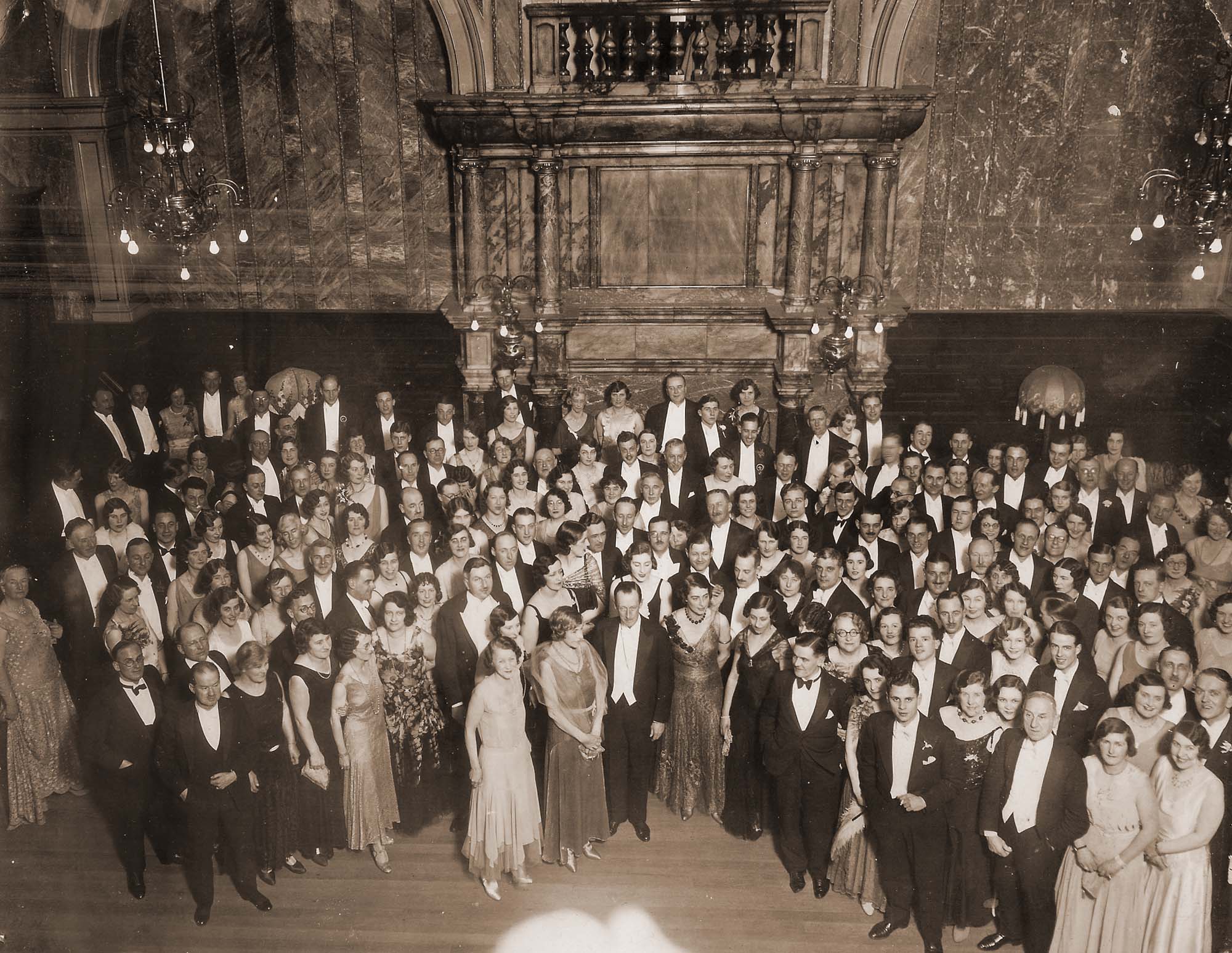
The distinguished guests at the Leicester Aero Club's annual ball in 1930 included aviator Amy Johnson who just two years previously had become the first woman to fly solo from England to Australia. Her host was Leicestershire brewer, politician and philanthropist William Lindsay Everard, a lifelong supporter of aviation who founded the Air Defence Cadet Corp which is now the Air Training Corp.
The General Newsroom
Facing the Grand Hotel, on the corner of Belvoir and Granby Streets, is the Grade II listed General Newsroom, another fine example of Leicester’s late-Victorian heritage. This impressive building is decorated with classical motifs and the Greek muses, (goddesses of the arts and sciences). Newspaper reading rooms provided information about the contemporary world and assisted in public education and civic engagement.
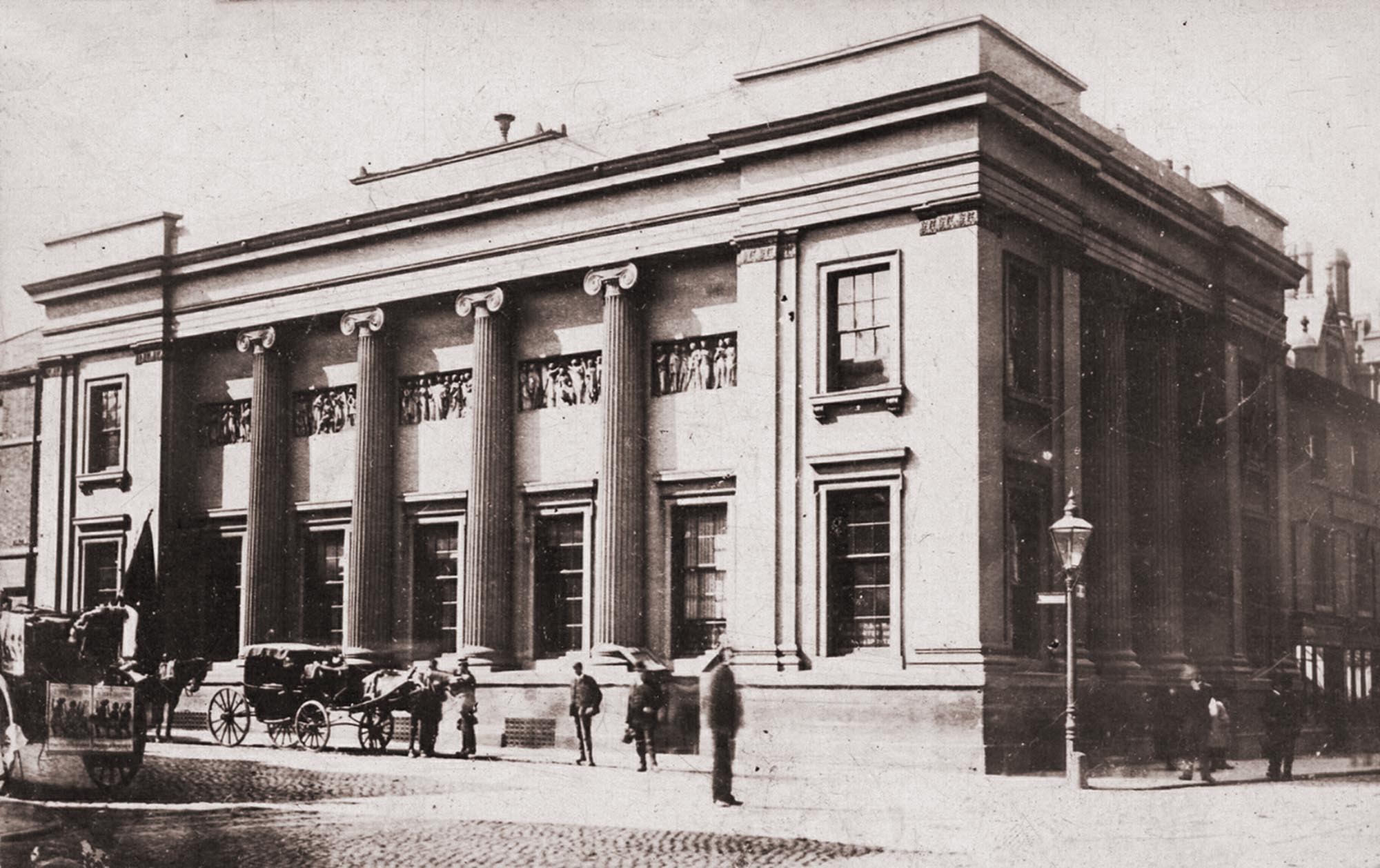
It replaced an earlier General News Room and Permanent Library which was designed by local architect William Flint, and opened in 1837. It was where the citizens of Leicester could read the latest local, national and international news. The present building, which served the same purpose, was also the design of a local architectural practice, Henry Langdon Goddard, and opened in 1898.
Goddard based his design on the work of the London architect John Belcher, richly decorated with numerous exuberant features including eight of the nine muses and other classical reliefs set into shell-like niches. In Greek mythology, the muses were deities who gave artists, philosophers and individuals the necessary inspiration for creation their art, music and writings.
Gallery
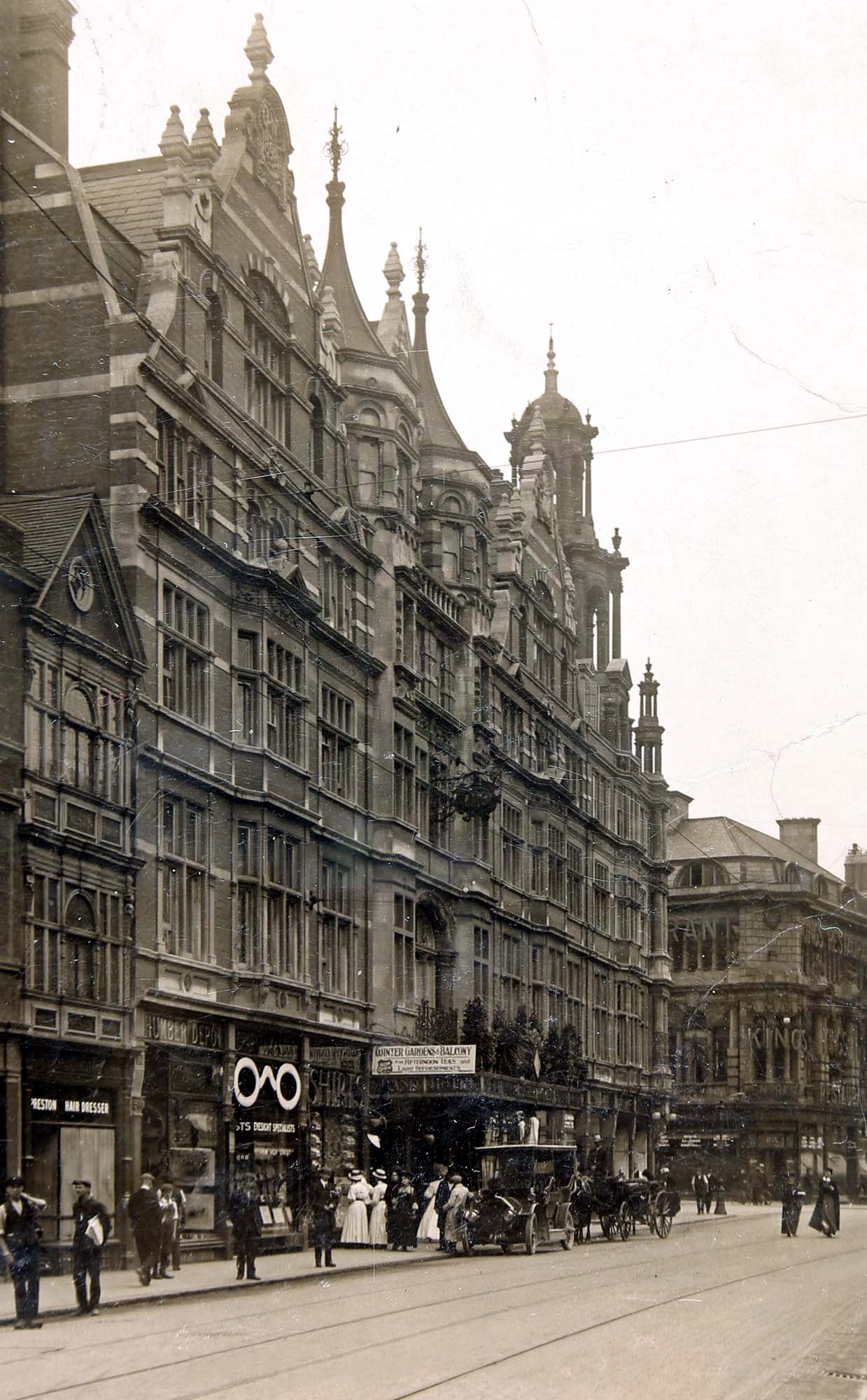
Leicestershire Record Office
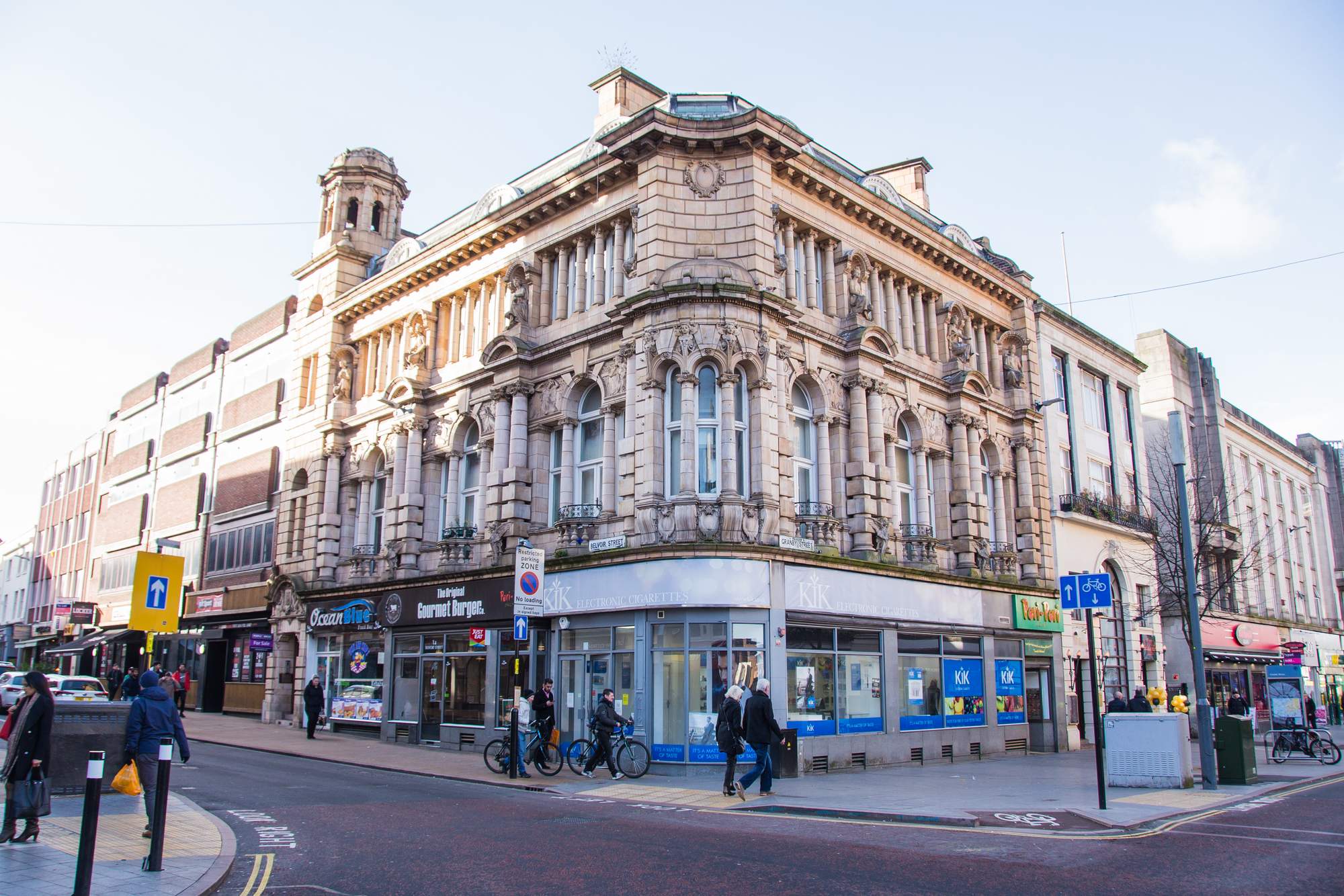
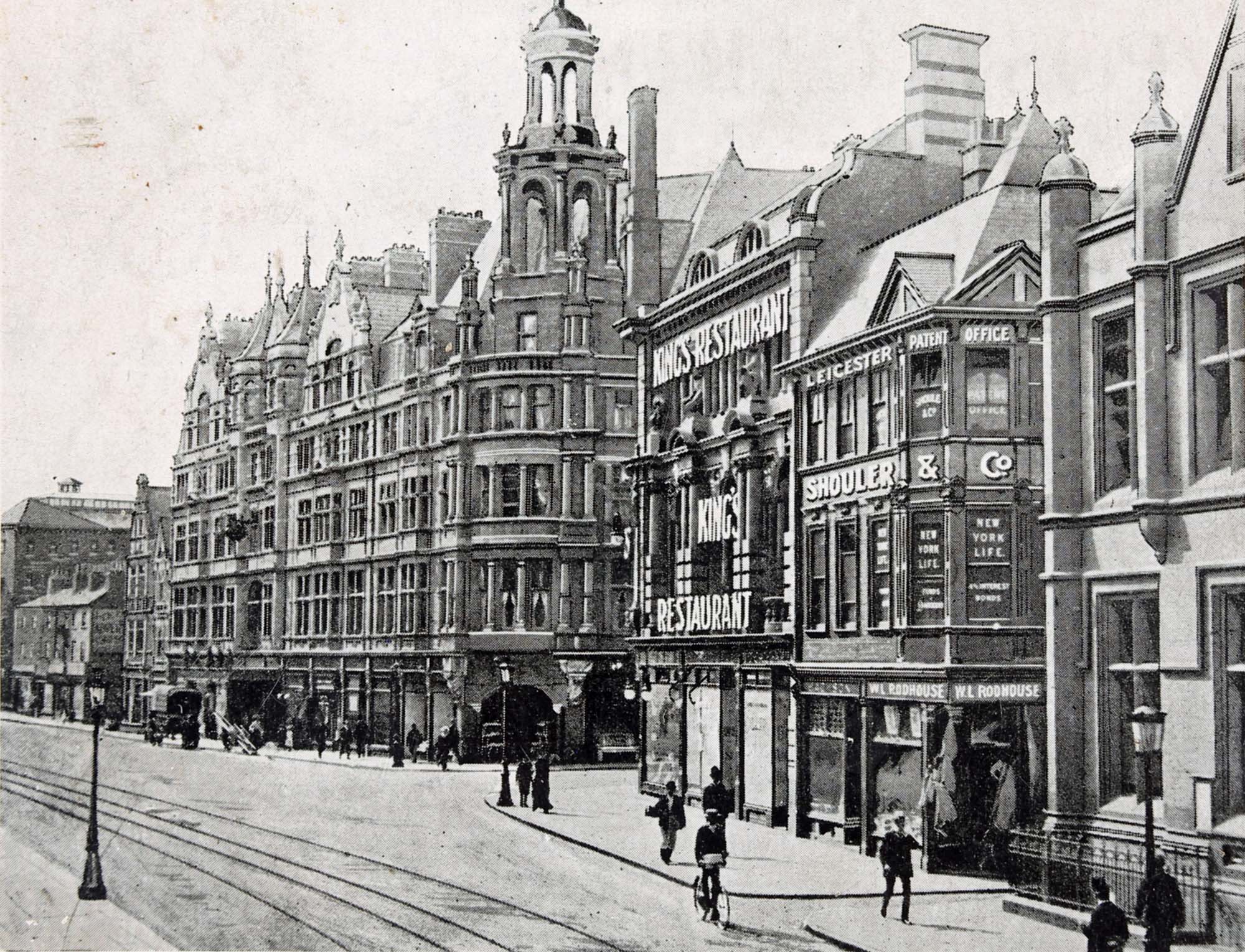
Leicestershire Record Office
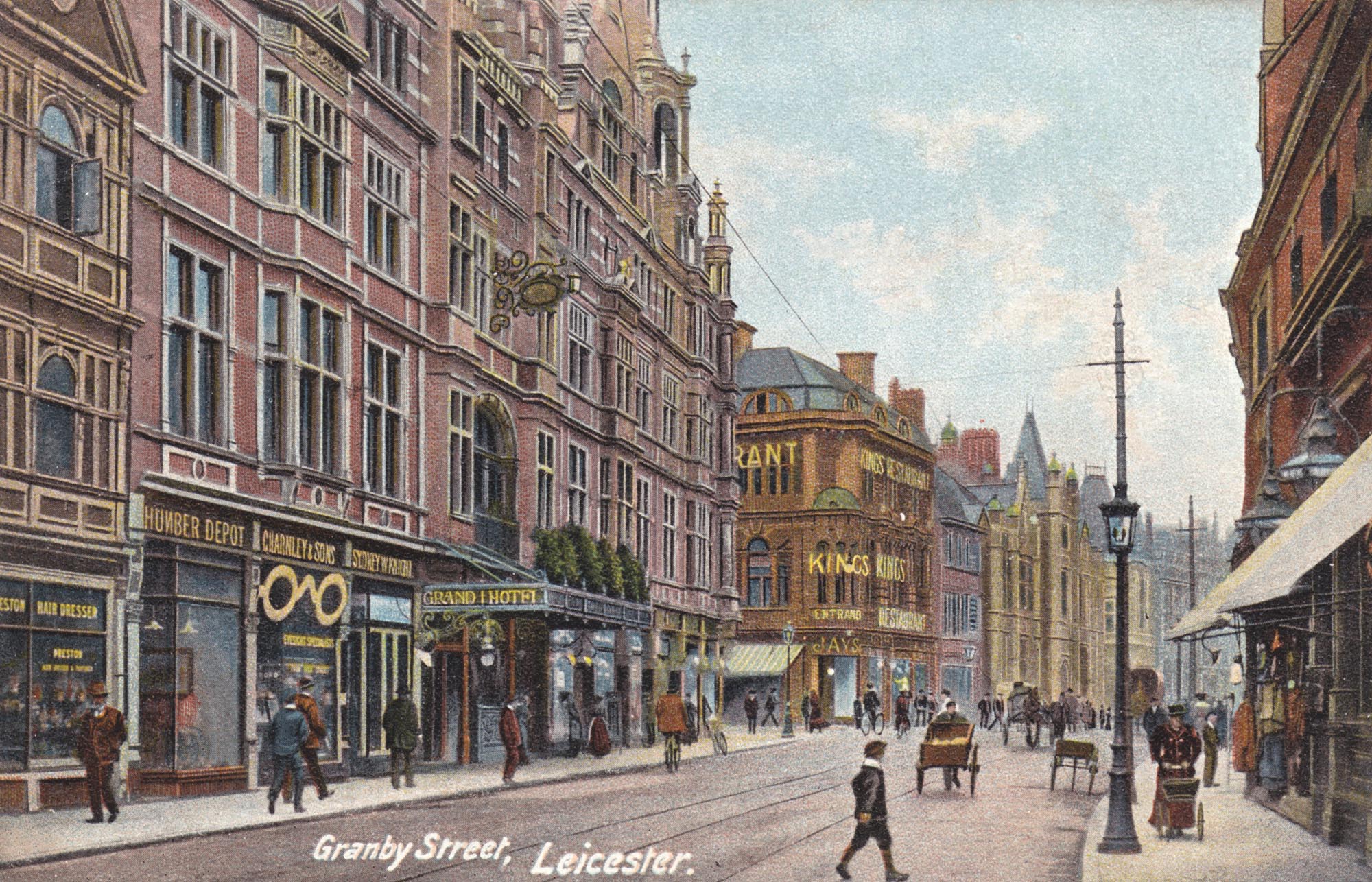

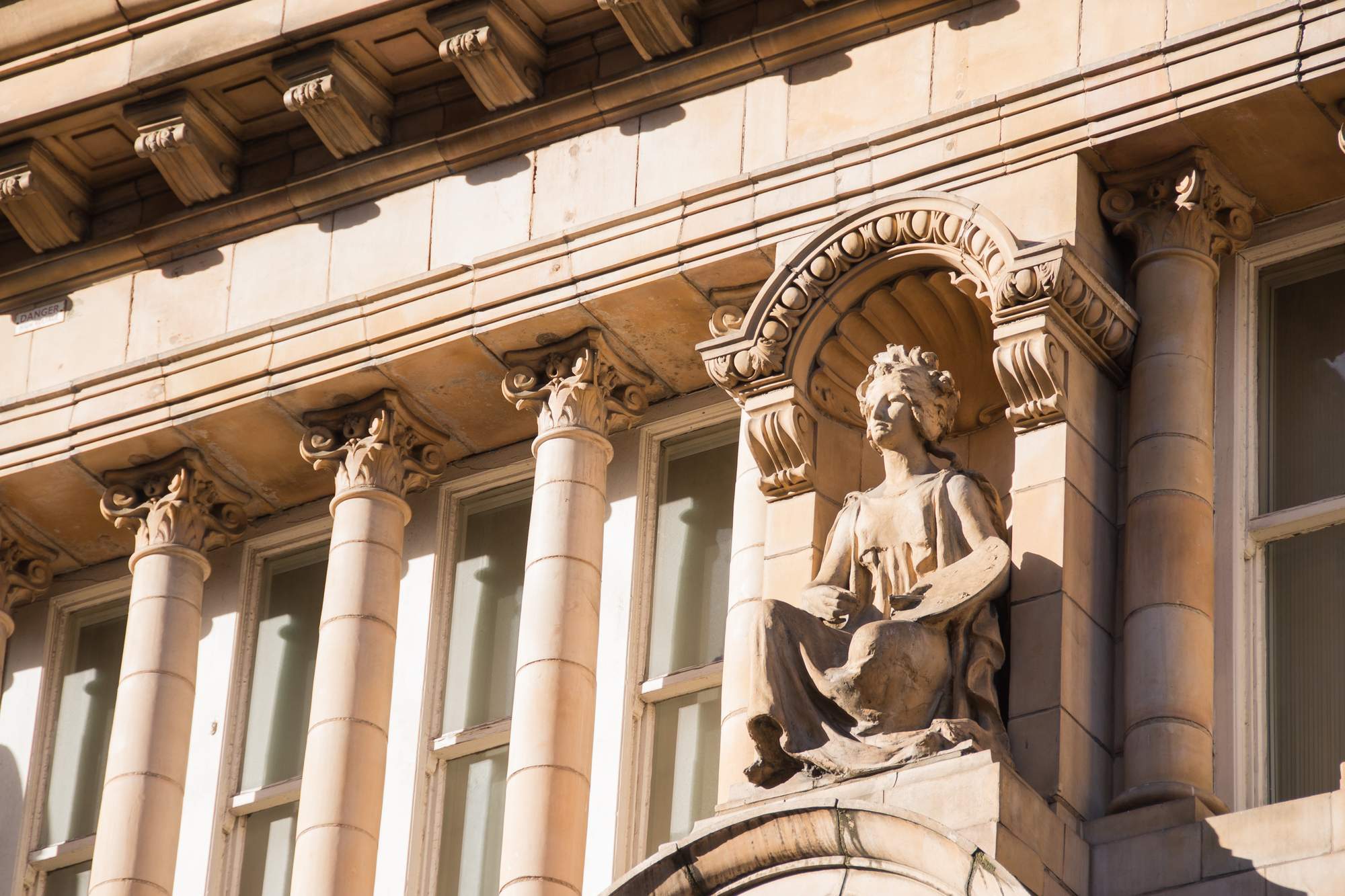

Leicestershire Record Office
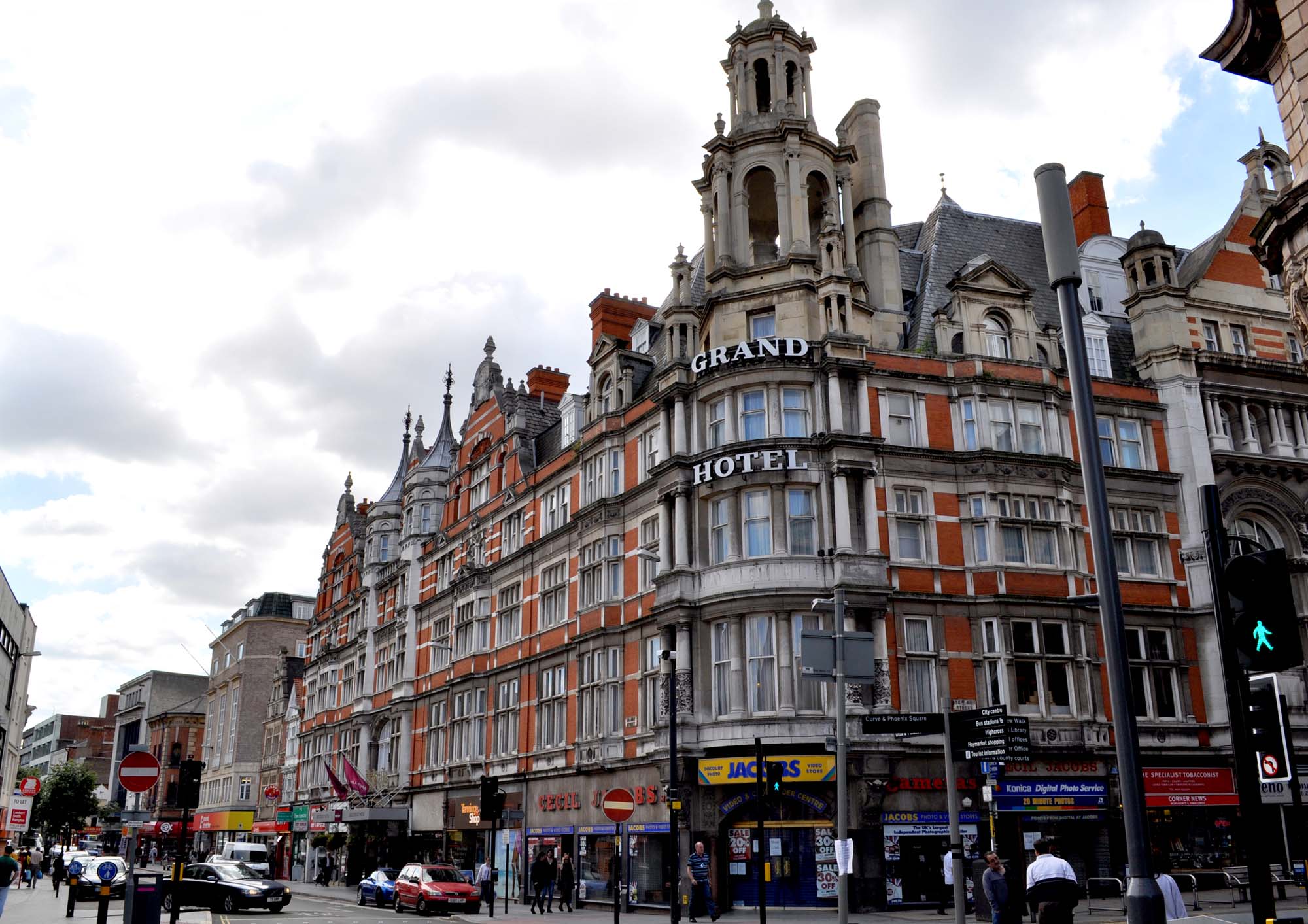
Roman Leicester
(47- 500) A military fort was erected, attracting traders and a growing civilian community to Leicester (known as Ratae Corieltauvorum to the Romans). The town steadily grew throughout the reign of the Romans.
Medieval Leicester
(500 – 1500) The early years of this period was one of unrest with Saxon, Danes and Norman invaders having their influences over the town. Later, of course, came Richard III and the final battle of the Wars of the Roses was fought on Leicester’s doorstep.
-
The Castle Motte1068

-
Leicester Cathedral1086

-
St Mary de Castro1107

-
Leicester Abbey1138

-
Leicester Castle1150

-
Grey Friars1231

-
The Streets of Medieval Leicester1265

-
Leicester Market1298

-
Trinity Hospital and Chapel1330

-
Bow Bridgecirca 1350

-
Church of the Annunciation1353

-
John O’Gaunt’s Cellar1361

-
St John's Stone1381

-
Leicester Guildhall1390

-
The Magazine1400

-
The Blue Boar Inn1400

-
The High Cross1577

Tudor & Stuart Leicester
(1500 – 1700) The wool trade flourished in Leicester with one local, a former mayor named William Wigston, making his fortune. During the English Civil War a bloody battle was fought as the forces of King Charles I laid siege to the town.
Georgian Leicester
(1700 – 1837) The knitting industry had really stared to take hold and Leicester was fast becoming the main centre of hosiery manufacture in Britain. This new prosperity was reflected throughout the town with broader, paved streets lined with elegant brick buildings and genteel residences.
-
Great Meeting Unitarian Chapel1708

-
The Globe1720

-
17 Friar Lane1759

-
Black Annis and Dane Hills1764

-
Leicester Royal Infirmary1771

-
New Walk1785

-
Freemasons’ Hall1790

-
Gaols in the City1791

-
Friars Mill1794

-
City Rooms1800

-
Development of Highfields1800

-
Wesleyan Chapel1815

-
20 Glebe Street1820

-
Charles Street Baptist Chapel1830

-
Glenfield Tunnel1832

-
James Cook1832

Victorian Leicester
(1837 – 1901) The industrial revolution had a huge effect on Leicester resulting in the population growing from 40,000 to 212,000 during this period. Many of Leicester's most iconic buildings were erected during this time as wealthy Victorians made their mark on the town.
-
Leicester Union Workhouse1839

-
Campbell Street and London Road Railway Stations1840

-
The Vulcan Works1842

-
Belvoir Street Chapel1845

-
Welford Road Cemetery1849

-
Leicester Museum & Art Gallery1849

-
King Street1850

-
Cook’s Temperance Hall & Hotel1853

-
Amos Sherriff1856

-
Weighbridge Toll Collector’s House1860

-
4 Belmont Villas1862

-
Top Hat Terrace1864

-
Corah and Sons - St Margaret's Works1865

-
Kirby & West Dairy1865

-
The Clock Tower1868

-
Wimbledon Works1870

-
The Leicestershire Banking Company1871

-
St Mark’s Church and School1872

-
Victorian Turkish Baths1872

-
The Town Hall1876

-
Central Fire Stations1876

-
Aylestone Road Gas Works and Gas Museum1879

-
Gas Workers Cottages1879

-
Leicestershire County Cricket Club1879

-
Welford Road Tigers Rugby Club1880

-
Secular Hall1881

-
Development of Highfields1800

-
Abbey Park1881

-
Abbey Park Buildings1881

-
Victoria Park and Lutyens War Memorial1883

-
Leicester Fosse FC 18841884

-
Leicester Coffee and Cocoa Company Coffee Houses1885

-
St Barnabas Church and Vicarage1886

-
Abbey Pumping Station1891

-
Luke Turner & Co. Ltd.1893

-
West Bridge Station1893

-
Thomas Cook Building1894

-
The White House1896

-
Alexandra House1897

-
Leicester Boys Club1897

-
Grand Hotel and General Newsroom1898

-
Highfield Street Synagogue1898

-
Western Park1899

-
Asfordby Street Police Station1899

-
Leicester Central Railway Station1899

Edwardian Leicester
(1901 – 1910) Electric trams came to the streets of Leicester and increased literacy among the citizens led to many becoming politicised. The famous 1905 ‘March of the Unemployed to London’ left from Leicester market when 30,000 people came to witness the historic event.
-
YMCA Building1900

-
The Palace Theatre1901

-
Pares's Bank1901

-
Coronation Buildings1902

-
Halfords1902

-
High Street1904

-
George Biddles and Leicester's Boxing Heritage1904

-
Municipal Library1905

-
Leicester Boys Club1897

-
The Marquis Wellington1907

-
Guild Hall Colton Street1909

-
Women's Social and Political Union Shop1910

-
Turkey Café1901

Early 20th Century Leicester
(1910 – 1973) The diverse industrial base meant Leicester was able to cope with the economic challenges of the 1920s and 1930s. New light engineering businesses, such as typewriter and scientific instrument making, complemented the more traditional industries of hosiery and footwear manufacturing.
-
Dryad Handicrafts1912

-
De Montfort Hall1913

-
Leicester During the First World War1914

-
Fox’s Glacier Mints1918

-
Statue of Liberty1919

-
Housing in Saffron Lane1924

-
Winstanley House1925

-
Housing in North Braunstone1926

-
Lancaster Road Fire Station1927

-
The Little Theatre1930

-
Saffron Hill Cemetery1931

-
Braunstone Hall Junior School1932

-
Former City Police Headquarters1933

-
Savoy Cinema1937

-
Eliane Sophie Plewman1937
-
City Hall1938

-
Athena - The Odeon Cinema1938

-
The Blitz in Highfields1940

-
Freeman, Hardy and Willis - Leicester Blitz1940

-
Leicester Airport1942

-
Leicester’s Windrush Generations1948

-
Netherhall Estate1950
-
Housing at Eyres Monsell1951

-
Silver Street and The Lanes1960

-
Bostik1960

-
Auto-Magic Car Park (Lee Circle)1961

-
University of Leicester Engineering Building1963

-
Sue Townsend Theatre1963

-
Central Mosque1968

-
Belgrave Flyover1973

Modern Leicester
(1973 – present day) Industry was still thriving in the city during the 1970s, with the work opportunities attracting many immigrants from all over the world. While industry has declined in recent years, excellent transport links have made Leicester an attractive centre for many businesses. The City now has much to be proud of including its sporting achievements and the richness of its cultural heritage and diversity.
-
Haymarket Theatre1973

-
The Golden Mile1974

-
Acting Up Against AIDS1976

-
Belgrave Neighbourhood Centre1977

-
Diwali in Leicester1983

-
Leicester Caribbean Carnival1985

-
Samworth Brothers1986

-
Jain Centre1988

-
Guru Nanak Dev Ji Gurdwara1989

-
King Power Stadium2002

-
LCB Depot2004

-
Curve2008

-
BAPS Shri Swaminarayan Mandir2011

-
Makers Yard2012

- Roman Leicester
- Medieval Leicester
- Tudor & Stuart Leicester
- Georgian Leicester
- Victorian Leicester
- Edwardian Leicester
- Early 20th Century Leicester
- Modern Leicester
Leisure & Entertainment















































































































































